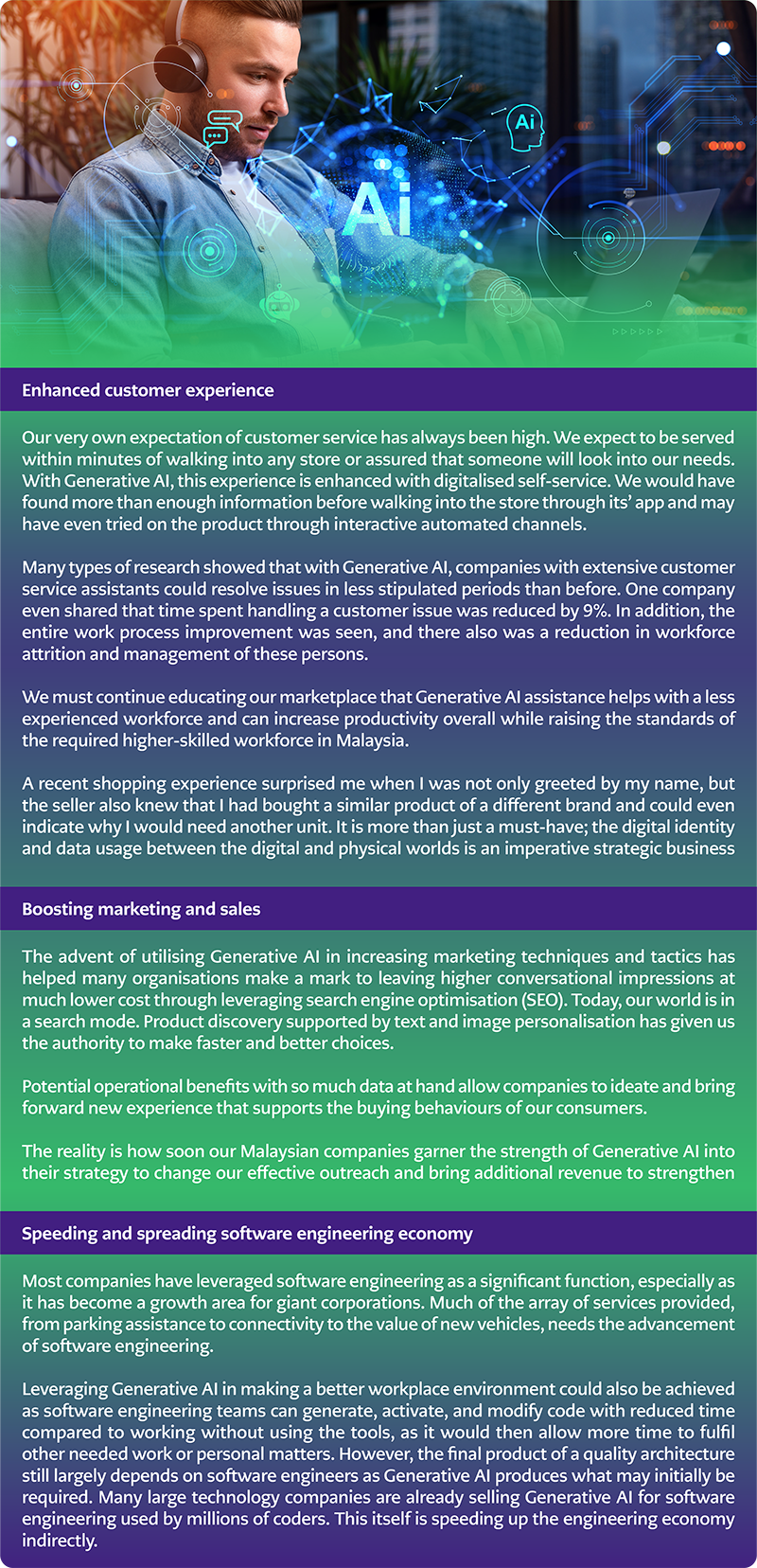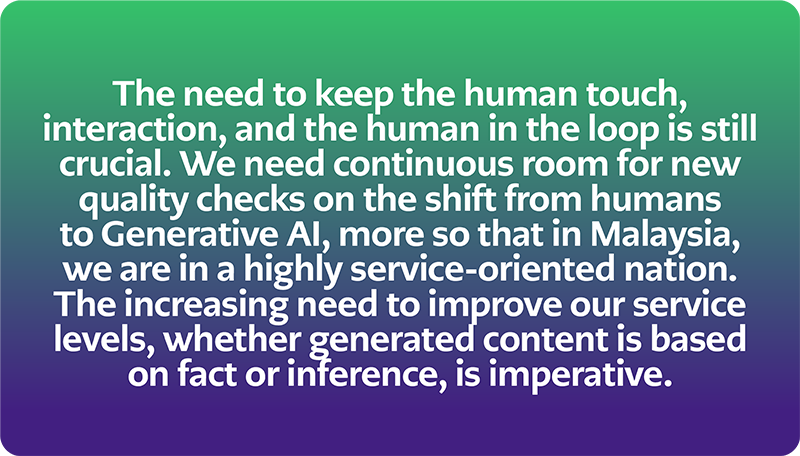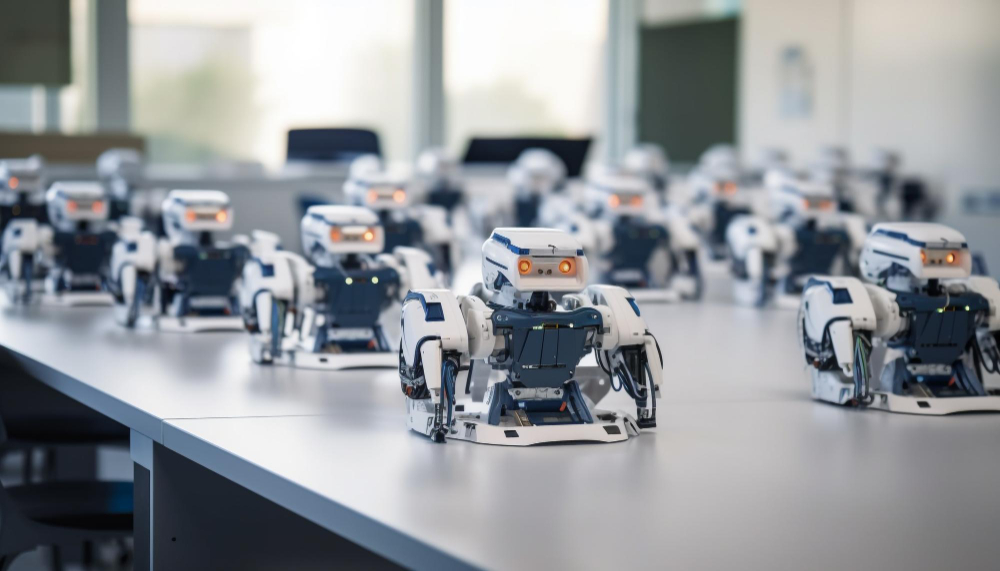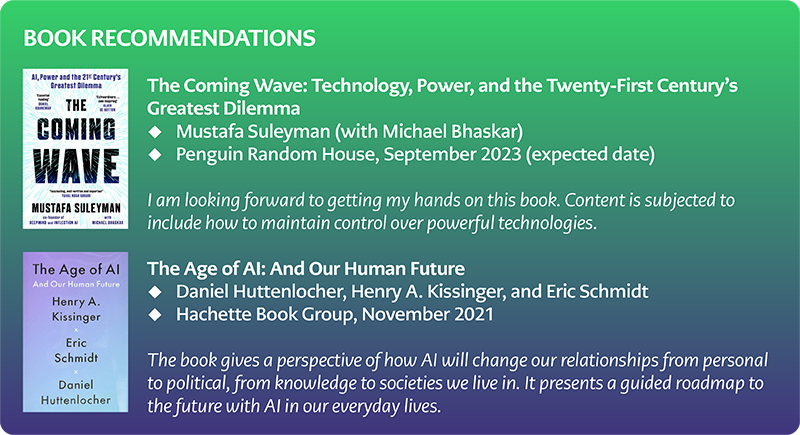Why Is It Everywhere? Generative AI!
Reflecting on the transformative impact of Generative AI, dive into the shift of the workforce dynamics, the automation of work and its role as a versatile tool in different business functions.

Did we ever think there would be a period in our life when humans would supervise, and machines would generate? I did not. I knew somewhere down the pathway, it would come. But, NOW that it is revolutionising my socioeconomic engagements, it makes me think of equitability for the larger community in Malaysia. A total paradigm shift is dawning or has dawned upon us.
So what is so exciting about Generative AI compared to other artificial intelligence that embarked into our work ways? Generative AI is specifically designed to generate new content as its primary output. Whether this is text, images, product suggestions, or whatever, that is what generative AI is designed to do. Other artificial intelligence focuses on identifying or classifying based on existing data or information.
While our lives are made easier with monotonous workloads moving out of our zone and giving way for more time for our vision, our purpose and our focus to be the core drivers of our business with the advent of AI, the workforce transformation acceleration is alluded as highly potential for technical automation. At least 50% of our current work activities could be automated in the next 20 years, much earlier than the transformation in our previous industrialisation.
The degree of disruption that generative AI will impact industries will likely vary. The industries that rely primarily upon knowledge-based workers will probably see more disruption and have the potential to gain more value, too. Many scholars of Generative AI have provided feedback that technology companies, not surprisingly, will see the most significant impact from Gen AI. A recent survey commented that the technology industry would see an estimated 9% global revenue impact.
In comparison, related industries with knowledge-based workers like medical products/pharmaceutical and banking financials will be 5%, and the education sector is estimated to be about 4%. The Gen AI effects in segments of manufacturing, aeronautics and electronics tasks have been gradually seen rising in the past, and the contrast to the impact previous technology waves did in these sectors would be less disruptive.

The above shows responses in an April McKinsey Global survey.
In an interview with a Gen Z recently, I was asked by the interviewee how much AI is used in the organisation that would need the employees to perform their work at optimum. I told the interviewee that in multiple ways and depending from role to role, Generative AI can be applied in various ways, avoiding giving a % as generative AI could produce different benefits to different business functions in any organisation. Given that Generative AI serves as both a virtual expert and a virtual collaborator, it is imperative as catalysts of our organisation for us to derive notable tasks that our daily work requirements may influence.
Our workload can be augmented and productivity accelerated by Generative AI that can rapidly digest data and derive methodological conclusions that can highly enhance knowledge of our work. This way, we can devote our time and energy to more impactful tasks and speed up our response time, especially for much-needed industries. The highly expected changes can be seen in some of the following areas:

Global reports have indicated that deploying Generative AI and related improved technologies will continue to help accelerate productivity, possibly even compensating for declining employment growth and improving the overall economic status.


With the increasing automation of work, Gen AI can contribute to the equitable development of the larger community by creating new job opportunities and driving economic growth.
Are we ready to modernise and break down data silos in Malaysia? I am sure more than 90% of our Malaysian executives already believe data is the differentiator within the industries and organisations, but our actions need to speed up more than just an indication in our strategy document as a "call/need to action" to "do it now" attitude.


This article is Helen Selvanathan's observation, Senior Director, Partner Go-to-Market, Software Partner Solutions, SAP Asia Pacific & Japan. She supports business partners who innovate, build and extend solutions that leverage SAP products. Helen also chapter leads for a global SAP employee engagement initiative - SAP Business Women's Network (BWN), and supports the company's efforts towards building a more sustainable and socially responsible world.






